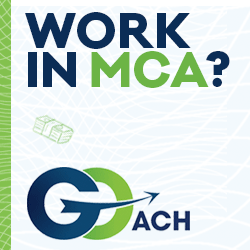Results 1 to 25 of 46
Hybrid View
-
09-12-2012, 04:20 PM #1Senior Member











 Reputation points: 99426
Reputation points: 99426
- Join Date
- Sep 2012
- Location
- New York, NY
- Posts
- 1,780
The REAL question is how many merchants actually qualify for 1.12 deals? Maybe 2% of all applicants? The great majority of my merchants fall in the 500-600 FICO range and the average deal size is about 15K-25K. I'd venture to say that almost NONE of these guys would be approved for a 1.12 deal.
-
09-12-2012, 11:38 PM #2
That's the "thing" about Opportunity Fund. A 550 FICO Merchant can potentially qualify for a 1.12 factor rate. To provide financing at this cost, especially to risky businesses will incur losses overall. Opportunity Fund will gladly lose money on their loans and advances because they accept donations to make up for it. That's the nature of their charity.
So if they end up a million in the hole at the end of year but receive a million in donations, they break even.
-
10-02-2012, 03:29 PM #3
MCA industry is sizzling Up Fast between Amex, First Data, kabbage, Amazon, Paypal, Wells, Goldman etc.. we are going Mainstream...........
-
10-02-2012, 06:13 PM #4
The issue with going "mainstream" is that all the little guys who have been whacking folks for fees, or offering sub par offers (because up until now they could) will no longer be able to do it. The top tier paper will go to levels that none of the existing funds out there are willing to go (12 month 1.06's? 18 month 1.18's?).
Almost as if we have been guinea pigs for the larger guys waiting a couple years to see if this was a flash in the pan or not. Now they are coming in with big guns and big money.
Should make for some interesting times in the near future.
-
10-03-2012, 11:17 AM #5Senior Member











 Reputation points: 4807
Reputation points: 4807
- Join Date
- Sep 2012
- Posts
- 199
Good post. Sometimes I worry about institutions coming in and taking over and other times I don't even blink an eye. It's all about ROI. Coming in with sick low rates is simply asking for a negative ROI. It takes a couple of years (at least 18 months) to really understand what you are getting into. I know that from experience. The book needs to season before you know if your underwriting is up to par and most importantly if you are making the returns you expected. I doubt any cash company of any size entered the market and made the returns they expected going in.
I say bring on Amex and Wells and others. It only makes the industry more credible. Something that the industry has been lacking since it's birth. Amex and Wells etc aren't going after the same clients that make up the majority of our book. I think that applies to most cash companies until you get into the top 10 like AMI, MCC, BFS, etc. They are very big and very thirsty. I would think they would stand the most to lose with larger institutions entering the market.
At the very least, I'm not worried about my company. We're small and don't want a big slice of the pie. I think our desired client is always attainable. Plus we run very low overhead and our capital isn't leveraged. We don't have to pay for it like others. Hopefully that keeps us competitive long into the future.
And I totally agree about interesting times coming up. Look at just the last 2 years and how much has changed. The trends are only getting stronger.
-
10-03-2012, 12:05 PM #6
Probably using the lending as a way to hold onto/secure merchants to sell their wares, use their banking, etc. Wells, Citi, Chase, B of A all do that with large merchants. They give them processign at interchage flat, or even interchange minus, to secure their banking business (where the real mony is).
Amazon is now going to be "lending money" to merchants (too proud to call it factoring?). Obviousy a way to lock in the sellers and also help increase the sales on their website (for which they collect commissions).


 Reply With Quote
Reply With Quote



















